Blogs
The latest cybersecurity trends, best practices, security vulnerabilities, and more
ARCHIVED STORY
Shamoon Returns to Wipe Systems in Middle East, Europe
By Alexandre Mundo · December 14, 2018
Destructive malware has been employed by adversaries for years. Usually such attacks are carefully targeted and can be motivated by ideology, politics, or even financial aims.
Destructive attacks have a critical impact on businesses, causing the loss of data or crippling business operations. When a company is impacted, the damage can be significant. Restoration can take weeks or months, while resulting in unprofitability and diminished reputation.
Recent attacks have demonstrated how big the damage can be. Last year NotPetya affected several companies around the world. Last February, researchers uncovered OlympicDestroyer, which affected the Olympic Games organization.
Shamoon is destructive malware that McAfee has been monitoring since its appearance. The most recent wave struck early this month when the McAfee Foundstone Emergency Incident Response team reacted to a customer’s breach and identified the latest variant. Shamoon hit oil and gas companies in the Middle East in 2012 and resurfaced in 2016 targeting the same industry. This threat is critical for businesses; we recommend taking appropriate actions to defend your organizations.
During the past week, we have observed a new variant attacking several sectors, including oil, gas, energy, telecom, and government organizations in the Middle East and southern Europe.
Similar to the previous wave, Shamoon Version 3 uses several mechanisms as evasion techniques to bypass security as well to circumvent analysis and achieve its ends. However, its overall behavior remains the same as in previous versions, rendering detection straightforward for most antimalware engines.
As in previous variants, Shamoon Version 3 installs a malicious service that runs the wiper component. Once the wiper is running, it overwrites all files with random rubbish and triggers a reboot, resulting in a “blue screen of death” or a driver error and making the system inoperable. The variant can also enumerate the local network, but in this case does nothing with that information. This variant has some bugs, suggesting the possibility that this version is a beta or test phase.
The main differences from earlier versions are the name list used to drop the malicious file and the fabricated service name MaintenaceSrv (with “maintenance” misspelled). The wiping component has also been designed to target all files on the system with these options:
- Overwrite file with garbage data (used in this version and the samples we analyzed)
- Overwrite with a file (used in Shamoon Versions 1 and 2)
- Encrypt the files and master boot record (not used in this version)
Shamoon is modular malware: The wiper component can be reused as a standalone file and weaponized in other attacks, making this threat a high risk. The post presents our findings, including a detailed analysis and indicators of compromise.
Analysis
Shamoon is a dropper that carries three resources. The dropper is responsible for collecting data as well as embedding evasion techniques such as obfuscation, antidebugging, or antiforensic tricks. The dropper requires an argument to run.
It decrypts the three resources and installs them on the system in the %System% folder. It also creates the service MaintenaceSrv, which runs the wiper. The typo in the service name eases detection.
The Advanced Threat Research team has watched this service evolve over the years. The following tables highlight the differences:

The wiper uses ElRawDisk.sys to access the user’s raw disk and overwrites all data in all folders and disk sectors, causing a critical state of the infected machine before it finally reboots.

The result is either a blue screen or driver error that renders the machine unusable.
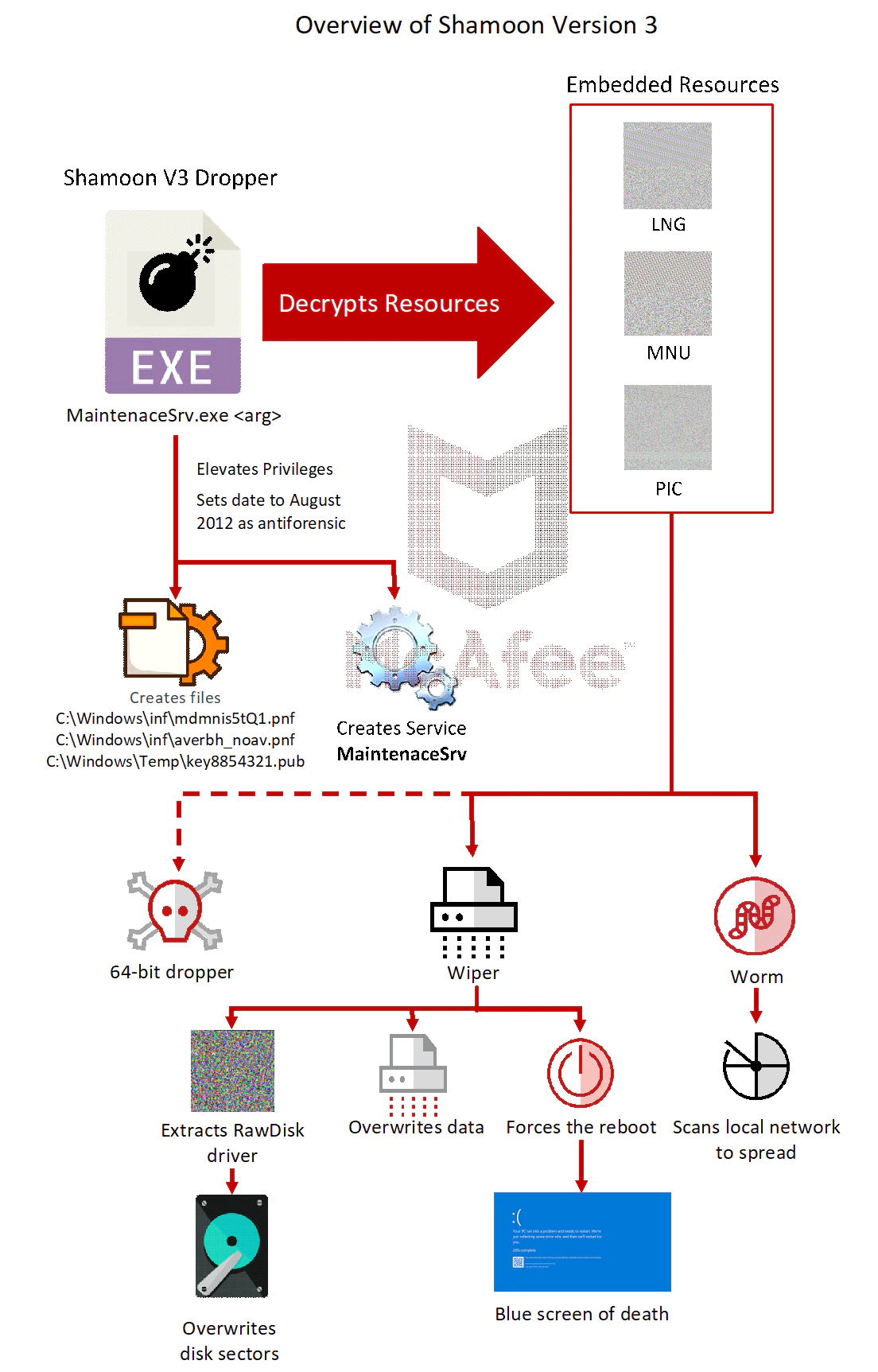
Overview

Dropper
Executable summary

The dropper contains other malicious components masked as encrypted files embedded in PE section.

These resources are decrypted by the dropper and contain:
- MNU: The communication module
- LNG: The wiper component
- PIC: The 64-bit version of the dropper
Shamoon 2018 needs an argument to run and infect machines. It decrypts several strings in memory that gather information on the system and determine whether to drop the 32-bit or 64-bit version.
It also drops the file key8854321.pub (MD5: 41f8cd9ac3fb6b1771177e5770537518) in the folder c:\Windows\Temp\key8854321.pub.

The malware decrypts two files used later:
- C:\Windows\inf\mdmnis5tQ1.pnf
- C:\Windows\inf\averbh_noav.pnf
Shamoon enables the service RemoteRegistry, which allows a program to remotely modify the registry. It also disables remote user account control by enabling the registry key LocalAccountTokenFilterPolicy.

The malware checks whether the following shares exist to copy itself and spread:
- ADMIN$
- C$\WINDOWS
- D$\WINDOWS
- E$\WINDOWS

Shamoon queries the service to retrieve specific information related to the LocalService account.

It then retrieves the resources within the PE file to drop the components. Finding the location of the resource:
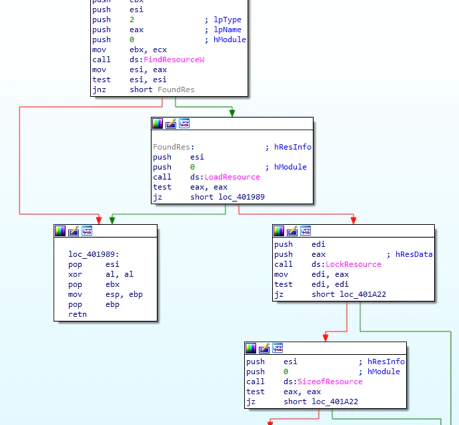
Shamoon creates the file and sets the time to August 2012 as an antiforensic trick. It puts this date on any file it can destroy.
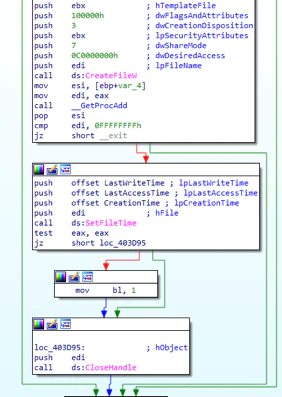
The modification time can be used as an antiforensic trick to bypass detection based on the timeline, for example. We also observed that in some cases the date is briefly modified on the system, faking the date of each file. The files dropped on the system are stored in C:\\Windows\System32\.
Before creating the malicious service, Shamoon elevates its privilege by impersonating the token. It first uses LogonUser and ImpersonateLoggedOnUser, then ImpersonateNamedPipeClient. Metasploit uses a similar technique to elevate privileges.

Elevating privileges is critical for malware to perform additional system modifications, which are usually restricted.
Shamoon creates the new malicious service MaintenaceSrv. It creates the service with the option Autostart (StartType: 2) and runs the service with its own process (ServiceType: 0x10):

If the service is already created, it changes the configuration parameter of the service with the previous configuration.
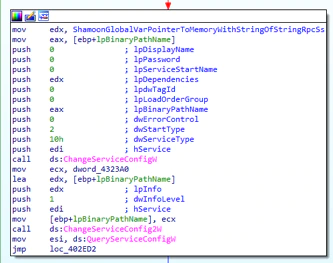
It finally finishes creating MaintenaceSrv:


The wiper dropped on the system can have any one of the following names:
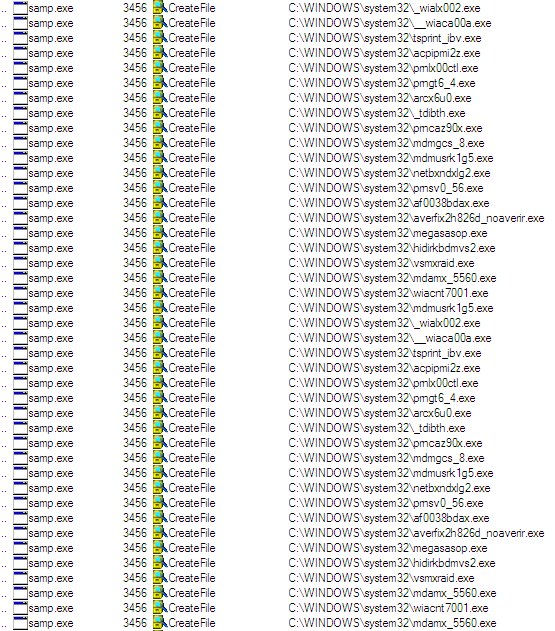
Next the wiper runs to destroy the data.
Wiper
The wiper component is dropped into the System32 folder. It takes one parameter to run. The wiper driver is embedded in its resources.

We can see the encrypted resources, 101, in this screenshot:
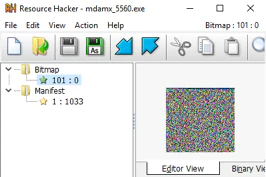
The resource decrypted is the driver ElRawDisk.sys, which wipes the disk.

Extracting the resource:
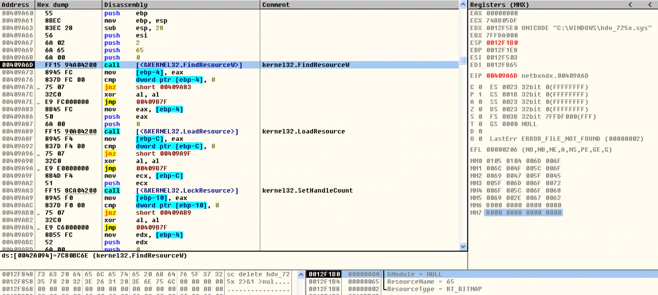

This preceding file is not malicious but is considered risky because it is the original driver.
The wiper creates a service to run the driver with the following command:
sc create hdv_725x type= kernel start= demand binpath= WINDOWS\hdv_725x.sys 2>&1 >nul


The following screenshot shows the execution of this command:
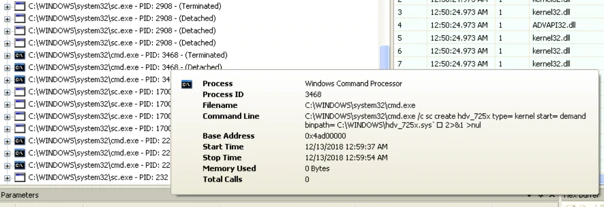
The malware overwrites every file in c:\Windows\System32, placing the machine in a critical state. All the files on the system are overwritten.

The overwriting process:

Finally, it forces the reboot with the following command:
Shutdown -r -f -t 2
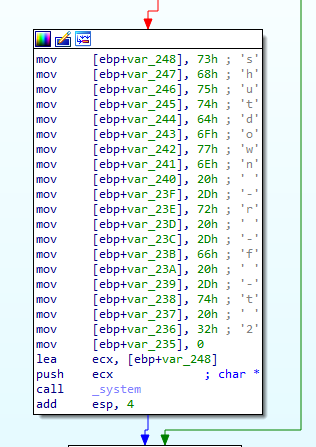
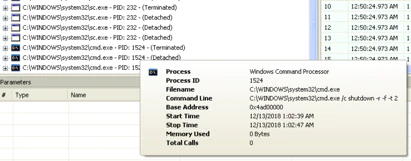
Once the system is rebooted it shows a blue screen:

Worm
The worm component is extracted from the resources from the dropper. Destructive malware usually uses spreading techniques to infect machines as quickly as possible.

The worm component can take the following names:

We noticed the capability to scan for the local network and connect to a potential control server:

Although the worm component can spread the dropper and connect to a remote server, the component was not used in this version.
Conclusion
Aside from the major destruction this malware can cause, the wiper component can be used independently from the dropper. The wiper does not have to rely on the main stub process. The 2018 Shamoon variant’s functionality indicates modular development. This enables the wiper to be used by malware droppers other than Shamoon.
Shamoon is showing signs of evolution; however, these advancements did not escape detection by McAfee DATs. We expect to see additional attacks in the Middle East (and beyond) by these adversaries. We will continue to monitor our telemetry and will update this analysis as we learn more.
MITRE ATT&CK™ matrix

Indicators of compromise
df177772518a8fcedbbc805ceed8daecc0f42fed Original dropper x86
ceb7876c01c75673699c74ff7fac64a5ca0e67a1 Wiper
10411f07640edcaa6104f078af09e2543aa0ca07 Worm module
43ed9c1309d8bb14bd62b016a5c34a2adbe45943 key8854321.pub
bf3e0bc893859563811e9a481fde84fe7ecd0684 RawDisk driver
McAfee detection
- Trojan-Wiper!DE07C4AC94A5
- RDN/Generic.dx
- Trojan-Wiper
RECENT NEWS
-
Jun 17, 2025
Trellix Accelerates Organizational Cyber Resilience with Deepened AWS Integrations
-
Jun 10, 2025
Trellix Finds Threat Intelligence Gap Calls for Proactive Cybersecurity Strategy Implementation
-
May 12, 2025
CRN Recognizes Trellix Partner Program with 2025 Women of the Channel List
-
Apr 29, 2025
Trellix Details Surge in Cyber Activity Targeting United States, Telecom
-
Apr 29, 2025
Trellix Advances Intelligent Data Security to Combat Insider Threats and Enable Compliance
RECENT STORIES
Get the latest
Stay up to date with the latest cybersecurity trends, best practices, security vulnerabilities, and so much more.
Zero spam. Unsubscribe at any time.